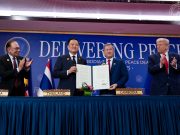(6.6.2025 – SINGAPORE) Following the recent extension of entitled marriage leave from 5 days to 25 days and that of maternity leave by 90 days to 188 days by the government of Sichuan, much to the joy of those planning to marry and the mothers-to-be in the Chinese province, many in the country want to know which part of China offers the longest leaves and is thus the best place to marry and give birth.

According to a check done by the Urban Evolution news website encompassing 31 provinces, Gansu and Shanxi offer the longest marriage leave at 30 days, while Guangdong, Guangxi, and Hubei still keep to the stipulated national minimum of 3 days. For maternity leave, Tibet provides the longest at up to one year, while Beijing, Shanghai, and Yunnan allow 158 days. The difference between the two ends comes to be as wide as 207 days.
As Zhai Zhenwu, president of the China Population Association and director of the Population and Development Research Center at Renmin University of China, explained to Urban Evolution, the central government has introduced in recent years many policies to encourage starting a family and childbearing. Now the focus is on implementing these policies, and this year has seen an intense effort across the country to extend marriage and maternity leaves, not just in terms of timespan but also with thoughtful support.
Since 2015, after the National People’s Congress, China’s legislature, amended the law to remove clauses discouraging women from marrying and giving birth early, many regions began revising their leave policies. They started with eliminating the late-marriage leave meant to be an incentive during the “one child policy” days and reverting to the three-day minimum, which is still applied in Guangdong, Guangxi, and Hubei.
The broader context for the moves is China’s demographic decline. After the 2021 population data showed a net increase of just 480,000 people, demographers predicted China’s population would decline by 2022 or 2023. Indeed, by 2022, China’s population fell by 850,000, the first drop since 1962.
As the population deficit looks increasingly critical, many provinces went on to adjust their marriage leaves upward. According to Urban Evolution, Gansu and Shanxi now offer the longest at 30 days. In addition to revising their marriage and maternity leaves, Shanghai city and Hubei province also stated in their action plans this year that these changes must be truly implemented and not be left as empty words.
Notably, Shanxi province was the first to revise the concerned regulations, taking action in September 2021. It raised marriage leave to 30 days and added 60 days as childbirth incentive to maternity policy. The policies have been in place for nearly five years.
In 2023 a message appeared on the online platform of People’s Daily, China’s flagship newspaper, proclaiming: “Shenzhen is a migrant city with many young workers, and 3 days of marriage leave isn’t enough for them to return home for wedding.” A newer comment late last month urged: “Given that many provinces have extended their marriage leaves, Guangdong’s 3-day limit is too short. Please consider making it at least 5 days.”
Given China’s vast geography and that marriage of inter-regional nature has become common, experts suggest marriage leave should be at least 7 days long, leaving to provinces too decide whether to increase.
As for maternity leave, according to a provision issued by the State Council, China’s Cabinet, in April 2012, female employees are always entitled to at least 98 days of maternity leave, including 15 days before childbirth. The last nationwide adjustment of family-planning policies took place in 2021. In August that year, the NPC passed some amendments prompting provinces to revise their local regulations and implement childbearing-encouragement measures, with maternity leaves generally extended by at least 60 days.
Meanwhile, experts argue that while leaves are essential, there are many considerations overlooked. For example, there is no share of the cost for women absenting themselves from workplace after delivery. This cost should not be borne by the women alone. “It should be shared,” sand Tan Lin, an NPC representative and former vice chair of the All-China Women’s Federation.




































